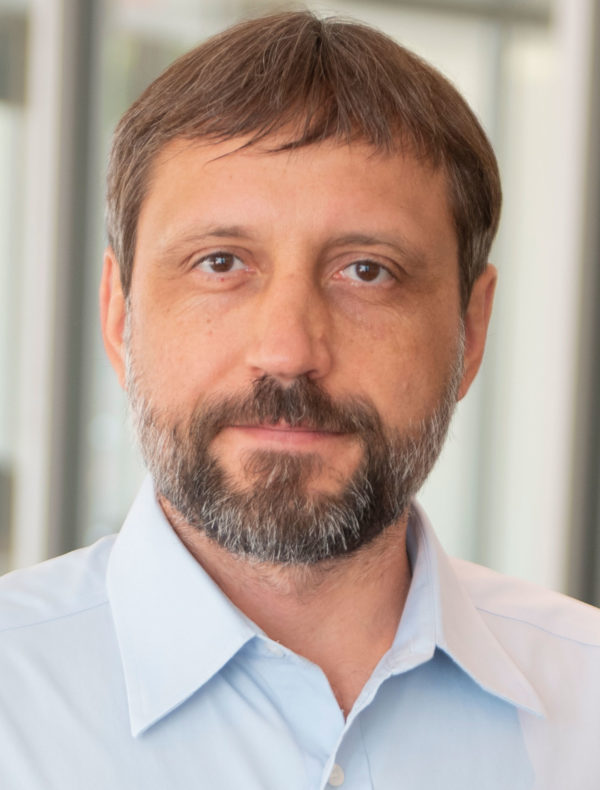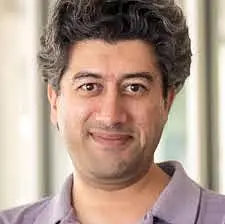
The U.S. Department of Energy has announced it will establish multi-institutional and multi-disciplinary hubs to advance foundational inertial fusion energy (IFE) science and technology, building on the groundbreaking work of the Department’s researchers into harnessing the power of the sun and stars. More information can be found on the Office of Science’s Fusion Energy Sciences homepage.
RISE Hub is part of the IFE STAR Ecosystem.
Here are the individual members of RISE Hub and selected announcements:
- Colorado State University leads the hub and will leverage the power of its ALEPH laser.
- Cornell University brings to the consortium nearly six decades of fundamental and applied research in pulsed-power-driven plasma physics.
- General Atomics will lead the development of manufacturing methods for IFE target capsules aimed at developing robust, reliable, and scalable processes suitable for the mass production of IFE targets.
- Los Alamos National Laboratory
- Marvel Fusion is pursuing the commercialization of a fusion concept based on newly identified interactions between ultra-short, high-contrast laser pulses and small-scale nanostructures.
- SLAC National Accelerator Laboratory
- Texas A&M University and its quantum optics experts will tackle fundamental issues with laser fusion.
- U.S. Naval Research Laboratory will contribute its expertise in designing, building, and testing excimer lasers.
- University of Illinois Urbana-Champaign (UICU) researchers will focus on the laser driver, studying the physics of the krypton fluoride (KrF) laser.
- Xcimer Energy Corporation is demonstrating core science and scalability of their novel laser architecture, key to commercializing inertial fusion.
Outreach
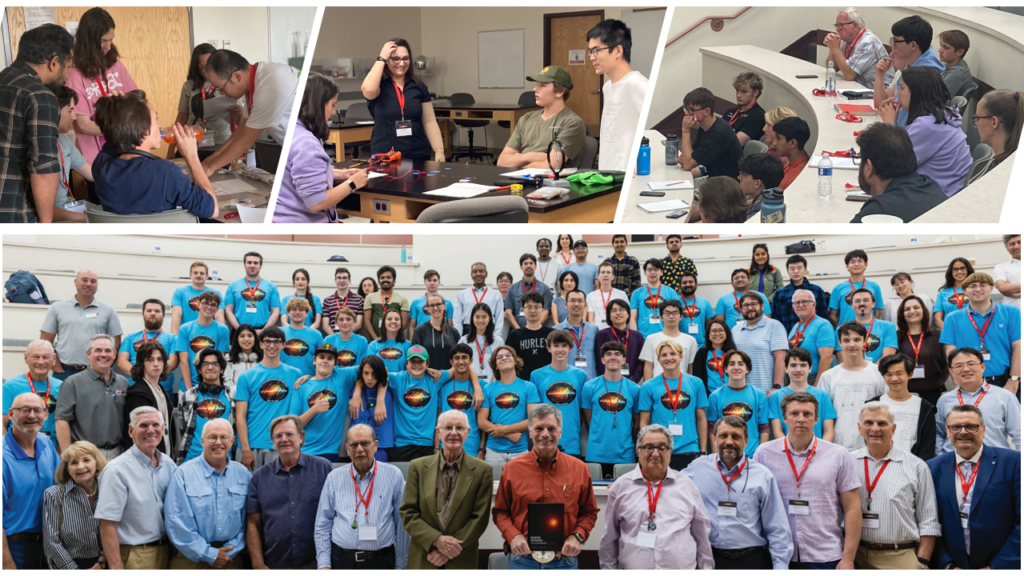
The RISE Hub is also a partner of the Quantum Science Camp(QSC) at Casper College. Fusion energy is a long-term goal and some of the talks you will find on this page present a timeline for commercially viable fusion energy power plants. With that in mind, RISE Hub has partnered with QSC to encourage the next generation of scientists to see its goals through. Below you will find selected talks from some of our RISE Hub scientists given at QSC 2024.
If you would like to know even more about QSC, please visit our IQSE QSC webpage!
Rise Hub IFE Casper Presentations

Date: July 18, 2024
Speaker: Carlo Fiorina, TAMU
Title: Post-Ignition Physics and Engineering of Target Chambers in Inertial Fusion Energy Systems
Abstract
This lecture is an overview of the post-ignition physics within inertial fusion energy chambers, with a focus on the engineering challenges and implications of these phenomena. Key topics include the outcomes of target ignition, the impact of neutrons and x-rays, the behavior of thick liquid walls under extreme conditions, the management of ablation and vapor transport. We will explore the theoretical foundations of these processes and their practical implications for the design and operation of inertial fusion reactors. The session is designed to provide an understanding of how post-ignition phenomena impact the development and optimization of fusion energy systems.

Date: July 23, 2024
Speaker: Matthew Wolford, U.S. Naval Research Laboratory
Title: Excimer Driver Technology for Laser Driven Inertial Confinement Fusion Energy, Zoom
Abstract
The challenge is immense to find a viable inertial confinement energy configuration that will be economical with our present energy options. Laser drivers show promise due to their precise control and significant stand-off from the fusion fuel. Investigation of ‘alternative’ laser drivers are explored including the excimer lasers of krypton fluoride (KrF, which has amplified stimulated emission centered near 248 nm) and argon fluoride (ArF, which has amplified stimulated emission centered near 193 nm). The experimental accomplishments, and theoretical developments for repetitively pulsed electron beam pumped excimer lasers for laser fusion energy will be reviewed. In addition, discussion of ongoing challenges for excimer laser systems and more importantly opportunities for you to make significant scientific and technical contributions for achieving large scale excimer laser drivers available for low cost fusion energy expeditiously. The future directions of the Electra facility including development of ultrashort ArF laser and solid state pulsed power system for the Electra will also be mentioned.

Date: July 23, 2024
Speaker: John Kline, LANL
Title: Basics of laser fusion energy
Abstract
N/A
Date: July 23, 2024
Speaker: Carmen Menoni, Colorado State University
Title: The demands on optical materials in high power lasers for inertial fusion energy
Abstract
Laser technologies have played a pivotal role in advancing science. Ultrafast lasers focused to ultra-high intensities (> 1021 W/cm2) make it possible to generate high density plasmas at [1] which produce intense sources of x-rays rays and drive fusion reactions [2], and to accelerate electrons to GeV energies in a few tens of centimeters [3]. Simultaneous advances in laser and target technologies were key to demonstrate laser driven fusion with net energy gain at the Lawrence Livermore National Laboratory (LLNL) National Ignition Facility (NIF) in Dec. 2022 [4].
In large part, advances in laser technologies rely on advances in materials. In this presentation I will describe basic laser architectures that are being developed as drivers for laser fusion. In particular I will emphasize the role of dielectric coatings which are ubiquitous in high power laser systems and will layout the opportunities that exist to advance these materials to the next level. In a second part of this talk I will provide a glimpse of parallel efforts in materials’ studies which are fundamental to support and advance laser fusion.
This work is supported by the U.S. Department of Energy (DOE), Office of Science, Fusion Energy Sciences, under Award No. DE-SC0024882: IFE-STAR.
[1] M. Purvis et al., Nature Photonics, 7: 796–800, (2013).
[2] A. Curtis et al., Nature Communications, 9: 7, (2018).
[3] B. Miao et al., Physical Review X, 12: 031038, (2022).
[4] H. Abu-Shawareb et al., Phys. Rev. Lett. 129, 075001, (2023).
Date: July 23, 2024
Speaker: Weng Chou, Sandia
Title: Model for KrF amplifier and laser scaling
Abstract
N/A
Date: July 23, 2024
Speaker: Jorge Rocca, Colorado State University
Title: Ultra-intense laser interactions with nanostructures: creating extreme plasma conditions and high energy ions for fusion energy with ultrafast lasers
Abstract
The interaction of ultrafast laser pulses of relativistic intensity with high aspect ratio
nanostructures can efficiently volumetrically heat matter to an ultra-high-energy-density
regime encountered in the center of stars and within the core of fusion capsules compressed by the world’s largest lasers [1]. It also generates gigantic quasi-static electromagnetic fields
that accelerate particles. Here we present an overview of the physics and applications of
these dense relativistic plasmas that can be created with pulses of relatively modest energy
from lasers that can operate at high repetition rate. Recent nanowire array experiments
produced near-solid density plasmas with an extreme degree of ionization (eg Au+72) which can serve as a platform for understanding atomic processes in extreme environments, and
converted ultrafast pulses of laser light into intense x-ray flashes with record efficiency. The
irradiation of nanostructures at intensities of > 1 ´ 1022 W cm-2 is predicted to lead to an
extreme Ultra High Energy Density plasma regime characterized by Terabar pressures that is virtually unexplored.
Nanowire arrays irradiated at relativistic intennsity act a micro-accelerators that accelerate
ions to MeV energies efficiently driving micro-scale fusion reactions. The acceleration of
deuterons from deuterated nanowire arrays to multi-MeV energies by the ALEPH Petawattclass
femtosecond laser resulted in quasi-monochromatic fusion neutron production 500
times larger than that from flat solid targets of the same material [2]. These results has been
followed by the development of fusion energy concepts by Marvel Fusion that rely on the
efficient conversion of laser energy into ion kinetic energy and its subsequent deposition into
fusible materials [3], opening a new pathway to laser-driven fusion energy.
Work supported by the U.S. Department of Energy (DOE), Office of Science, Fusion Energy Sciences, under Award No. DE-SC0024882: IFE-STAR, Air Force Office of Scientific Research under award
FA9550-17-1-0278, and a DoD Vannevar Bush Faculty Fellowship ONR award N000142012842, using
facilities supported by LaserNet US grant US DE- SC0021246
H. Ruhl and G. Korn, “High current ionic flows via ultra-fast lasers for fusion applications,” arXiv:2212.12941 (2022).
J. J. Rocca, M. G. Capeluto, R. C. Hollinger, S. Wang, Y. Wang, G. R. Kumar, A. Lad, A. Pukhov, and V. N.
Shlyaptsev, “Ultra-intense femtosecond laser interactions with aligned nanostructures,” OPTICA, 11, 437 (2024)
A. Curtis, C. Calvi, J. Tinsley, R. Hollinger, V. Kaymak, A. Pukhov, S.J. Wang, A. Rockwood, Y. Wang, V.N. Shlyaptsev, and J.J. Rocca, Micro-scale fusion in dense relativistic nanowire array plasmas, Nature Communications, 9: 7, (2018).
Date: July 23, 2024
Speaker: Siegfried Glenzer, SLAC/Stanford
Title: The road to ignition and fusion energy gain
Abstract
N/A
Video
Date: July 24, 2024
Speaker: Arianna Gleason-Holbrook, SLAC/Stanford
Title: From planetary interiors to harnessing star power: exploring the frontier matter at extreme conditions
Abstract
The study of matter under extreme conditions is a highly interdisciplinary subject with broad applications to materials science, plasma physics, geophysics and astrophysics. Understanding the processes which dictate physical properties in warm dense plasmas and condensed matter requires studies at the relevant length-scales (e.g., interatomic spacing) and timescales (e.g., phonon period). Experiments performed at XFEL light sources across the world, combined with dynamic compression, provide ever-improving spatial- and temporal-fidelity to push the frontier. This talk will cover a very broad range of conditions, intended to present an overview of important recent developments in how we generate extreme environments and then how we characterize and probe matter at extremes conditions– providing an atom-eye view of transformations and the fundamental physics dictating plasma and materials properties. Examples of case-studies closely related to planetary sciences and inertial fusion energy, as enabled by ultrafast X-ray imaging, diffraction and spectroscopy, will be discussed.
Video
Date: July 24, 2024
Speaker: Alexei Sokolov, TAMU
Title: Novel Nonlinear Optics Enabled by Quantum Coherence
Abstract
Quantum coherence is the central feature of multiple techniques and corresponds to a situation where atoms or molecules of a sample are prepared in a coherent superposition state. High degree of coherence can lead to amazing results. Atomic coherence has earlier been used in electromagnetically induced transparency, ultraslow light propagation, and lasing without inversion. Molecular coherence enables a variety of applications, including, for example, a technique termed molecular modulation, which produces a coherent optical bandwidth spanning infrared, visible, and ultraviolet spectral regions [Fig. 1(a)], allowing arbitrary ultrafast space- and time-tailored sub-cycle optical field synthesis. Building upon these ideas, we have shown that an increased and cleverly manipulated molecular coherence enables improvements in optical detection and sensing, including remote sensing scenarios. Another remarkable example is the use of molecular coherence for the purpose of combining high-power laser beams through stimulated Raman scattering [Fig. 1(b)] – a technique adopted by the laser-fusion community, particularly in the inertial-confinement approach where excimer lasers are used as drivers.
A large number of people have contributed to this work; I will give proper acknowledgements during my presentation. I want to give special thanks to Aleksei Zheltikov, Marlan Scully and Zhenhuan Yi.
Video
Date: July 24, 2024
Speaker: Kavita Kabelitz, University of Illinois Urbana-Champaign
Title: Introduction of High-Power Laser Systems for Inertial Fusion Energy
Abstract
One important component for internal fusion energy (IFE) is the laser driver. For IFE, there are several goals for the laser such as having an output power on the order of megawatts, operating in the ultraviolet, and a high wall-plug efficiency. In order to scale up the laser energy, there are several important parameters which must be considered during the engineering process. This presentation will focus on laser physics and the parameters paramount to high power systems. A comparison of different high-power systems including the rare gas-halide systems and Nd:Glass will be provided along with an overview of their operation. Examples of other laser systems will also be shown including helium neon systems, argon ion lasers (see Fig. 1), and the Nd:YAG laser.
Video
Date: July 24, 2024
Speaker: Gary Eden, TAMU/UIUC
Title: Krypton Fluoride as the Laser Driver for Inertial Fusion Energy
Abstract
Laser fusion energy (LFE) offers the potential to generate electrical power by the same process that our Sun produces energy. Recent experiments at the Lawrence Livermore National Laboratory (LLNL) have realized the long-sought goal of scientific breakeven – the generation of more energy from a laser-irradiated, deuterium-tritium (DT) target than that delivered to the target by the laser. This breakthrough in LFE suggests that the commercial-generation of electrical power is feasible but the most-challenging goal – realizing an economically viable power plant – lies ahead. This presentation will focus on the krypton-fluoride laser (248 nm) as the most attractive optical driver for the industrial production of power by LFE.
Video

Date: July 24, 2024
Speaker: Jean-Pierre Cayol, International Atomic Energy Agency
Title: The International Atomic Energy Agency: a Central Role in the Development and Promotion of Nuclear Applications for Sustainable Development
Abstract
December 8th, 1953, United Nations General Assembly, New York City. H.E. Dwight Eisenhower, 38th President of the United States of America walks to the podium and takes the floor to deliver what became known as the “Atoms for Peace” speech (photos below).
Such is the genesis of the International Atomic Energy Agency (IAEA), established in 1957, twelve years after the end of World War II, in Vienna, Austria.
Today, almost 61 years after the “Atoms for Peace” speech, the IAEA stands strong, with the support of its 178 Member States, delivering its mandate along three pillars: safeguarding the nuclear fuel worldwide, ensuring the safe and secure use of nuclear sources and equipment, and promoting nuclear sciences, technologies and applications.
Relying on its twelve laboratories dedicated to applied research and development and over 1,000 scientists in Member States working in collaboration with its specialized staff, the IAEA is contributing to making peaceful nuclear applications available in all aspects of basic human needs, contributing directly to nine and indirectly to all 17 Sustainable Development Goals.
The IAEA’s integral role to address some of today’s most pressing global challenges as a science and technology- based Organization has made it indispensable in areas where radiation and nuclear techniques offer solutions where conventional techniques cannot. From providing accurate information on availability of fresh water resources so countries know how many years of water they still have, to diagnosing diseases such as Alzheimer’s, cardiovascular diseases and cancer to recycling plastic waste which would have needed over 100 years to break down, and monitoring the intake of carbon dioxide in the ocean as well as controlling life- and livelihood- threatening insect pests that are transmitting diseases, nuclear applications are in everyday life, even though the public understanding may not reflect that.
All these applications are based on the physical and chemical properties of the atoms, using irradiation to sterilise or modify organisms or materials or using radio- or stable isotopes for tracing biological or physical processes. This lecture will examine the myriad of applications offered through nuclear science and the efforts exerted to ensure that these integral technologies reach the people in need around the world, be it cancer patients in Latin America, rural communities facing limited harvest of wheat due to drought in Sub-Saharan Africa, or the challenges of securing safe food for entire populations in Southeast Asia, while overcoming the “nuclear stigma” in a rapidly evolving global landscape.
Video
Date: July 24, 2024
Speaker: Aleksei Zheltikov, TAMU
Title: Rogue waves, black swans, and laser beam instabilities
Abstract
In this talk, we will review manifestations of extreme events in optical physics. A bigger-picture perspective on such events and their inner workings will be shown to encompass a remarkable variety of phenomena, spanning across various disciplines and areas of science, ranging from rogue waves in the ocean to black swans in the stock market.
Unlike deterministic optics, which describes nonlinear processes in terms of well-defined field intensities, as well as well-resolved thresholds and gain spectra, its stochastic counterpart is concerned with a question as to how probable these processes are. Remarkably, despite an enormous variety of output statistics found in optics, all these statistics converge, in their extreme-value limit, to one of only three universal extreme-value distributions. Specifically, in the class of polynomial nonlinearities, such as those found in self-focusing, self-phase modulation, weak-field harmonic generation, and multiphoton ionization, the statistics of the nonlinear-optical output converges, in the extreme-value limit, to the exponentially tailed, Gumbel distribution. Exponentially growing nonlinear signals, on the other hand, such as those induced by parametric instabilities and stimulated scattering, are shown to reach their extreme-value limits in the class of the Fréchet statistics, giving rise to extreme-value distributions with heavy, manifestly nonexponential tails, thus favoring extreme-event outcomes and rogue-wave buildup.
We will discuss deterministic and stochastic aspects in wave instabilities in optics and will search for a fine line between avoidable and unavoidable in laser beam instabilities. As one important finding, stochastic laser beams that nominally meet the deterministic beam-stability criterion may emerge as unstable on large pulse samples.
In a rapidly changing scenery of modern optical science and laser technologies, nonlinearity-induced instabilities keep posing new challenges, exhibiting unexpected features, sometimes showing up in an unrecognizable form, as completely new actors in a complex spatiotemporal dynamics of high-power optical field waveforms. Clear understanding of these complex scenarios and the pertinent beam-stability parameter space is critical for adequate laser-beamline design in many areas of optical science and laser technologies, including laser-fusion research and laser-fusion plants moving forward. These pressing questions are the focus of research that the IQSE team at Texas A&M University conducts as a part of the multi-institution RISE Hub effort1 aiming to advance laser-driven fusion energy.
Date: July 24, 2024
Speaker: Barnabas Kim, TAMU
Title: Introduction to the BGK relaxation model for the Boltzmann transport equation
Abstract
In kinetic theory, Boltzmann has introduced a transport equation for a dilute gas [1]. Since this equation is very difficult to get a solution even in a simple system, many attempts have been tried to get a physically reasonable solution, e.g., works done by Wang Chang and Uhlenbeck [2]. One of notable approximations about the troublesome collision integral is introduced by Lorentz through relaxation time. Bhatnagar, Gross, and Krook [3] have developed into a proper model for the collision integral, and presented a systematic way to get a dynamical description on the system, which is known as BGK model, and gave a solution of the Boltzmann equation. After a brief derivation for the Boltzmann equation, I will introduce the main strategies of BGK model with their views on the problem: note that the collision process in BGK model conserves particle numbers, momentum, and energy upto first order. This tutorial will improve the understanding for the gas dynamics in the stimulated Brioullion Scattering [4].
[1] Huang, Stat. Mech. (2nd).
[2] Wang Chang and Uhlenbeck, CM-443 (1948); CM-681 (1951).
[3] Bhatnagar, Gross and Krook, Phy. Rev. 94, 511 (1954).
[4] Averbakh, Makarov, and Talanov, Sov. J. QE 5, 1201 (1975).
Date: July 24, 2024
Speaker: Arash Azizi, TAMU
Title: Statistical mechanics and laser fusion: From BGK to BBGKY
Abstract
The National Ignition Facility’s 2022 breakthrough [1] is a real game-changer in one of the long-time goals of physics/engineering: fusion. This process is theoretically based on a well-known phenomenon in physics, namely stimulated Brillouin scattering. More fundamentally, the light-matter interaction is a non-equilibrium interaction and obeys the Boltzmann transport equation. However, the collision integral in the latter can be approx- imated by the relaxation method of Bhatnagar–Gross–Krook (BGK).
In this tutorial talk, we review the kinetic model of Sugawara-Yip [2], which is based on the BGK approximation.
Moreover, the Bogoliubov-Born-Green-Kirkwood-Yvon (BBGKY) hierarchy is a set of equations describing the dynamics of a system of a large number of interacting particles. Since the first term in the hierarchy gives the Boltzmann equation, one aims to generalize the kinetic model of Sugawara-Yip based upon insight from the BBGKY hierarchy.
References
A. Sugawara and S. Yip, Kinetic Model Analysis of Light Scattering by Molecular Gases, Phys. Fluids 10, 1911–1921 (1967).
H. Abu-Shawareb et al. (The Indirect Drive ICF Collaboration), Achievement of Target Gain Larger than Unity in an Inertial Fusion Experiment, Phys. Rev. Lett. 132, 065102 (2024).
Date: July 24, 2024
Speaker: Reed Nessler, TAMU
Title: Boltzmann equation and BGK for stimulated Brillouin scattering
Abstract
For intense beams of light (e.g. laser) traveling in a medium or in a waveguide, such as an optical fiber, the variations in the electric field of the beam itself may induce acoustic vibrations in the medium via electrostriction. As a result of those vibrations, the beam undergoes scattering, usually in the direction opposite the incoming beam, a phenomenon known as stimulated Brillouin scattering (SBS). SBS occurs through interaction of light with acoustic waves in solids, liquids, and gases and with ion-acoustic waves in plasmas. SBS is used most often for pulse compression and for correction of phase distortion in propagating light beams through phase conjugation. We will explain the physics of SBS and show simple calculations of the SBS gain using acoustic wave equation applicable in the hydrodynamic limit and the Boltzmann transport equation in the relaxation time approximation, and discuss validity of the latter approximation.
TAMU IQSE Seminars

Date: January 28, 2025
Speaker: Muzzamal Iqbal Shaukat (IQSE, Texas A&M University)
Title: BGK Model with and without velocity-dependent collision frequency
Abstract
We will discuss the Bhatnagar-Gross-Krook (BGK) relaxation representation of the collision integral that accounts for the presence of internal degrees of freedom and yields the correct moment equations. We will explore the effect of velocity-dependent collision frequency on stimulated Brillouin scattering gain. Then we will employ the Boltzmann kinetic equation to two interacting gases, to highlight the influence of collisional relaxation for predicting and controlling SBS Gain in multi-species gaseous environments.

Date: January 15-16, 2025
Speaker: Multiple
Title: Joint TAMU-UT Workshop
Abstract
We are pleased to announce a Joint Quantum Science and Technology Workshop, a collaborative effort between Texas A&M University and the University of Texas at Austin. The workshop aims to bring together faculty members to foster dialogue, identify shared interests, and establish potential collaborations in key areas of quantum science and technology. This inaugural workshop will follow on the Physics of Quantum Electronics (PQE) colloquium held every winter for over fifty years. The topics covered will focus on the overlap of those featured at this year’s PQE and topics of special interest to the members of the UT Quantum Institute.

Date: December 19, 2024
Speaker: Qiang Chen (Lawrence Berkeley National Laboratory)
Title: Advancements in Multi-beam Laser–Plasma Interactions and Their Relevance to Inertial Confinement Fusion
Abstract
The interaction of multiple intense laser pulses with plasma, a critical area of study in inertial confinement fusion (ICF), leads to phenomena such stimulated backscattering, energy deposition, plasma wave generation, and particle acceleration. In this talk I will talk about some of my recent research on such multi-beam laser–plasma interactions pertinent to ICF, including:
(1) extreme laser amplification by stimulated Raman backscattering, which is an undesired instability in ICF;
(2) new electron injection mechanism using laser interference induced plasma grating, which in ICF influences the energy transfer and deposition;
(3) compact Gamma Tomography and Gamma Lidar technology that has potential for the remote sensing of fusion target;
(4) analysis of cylindrically symmetric vapor-assisted compression techniques for targets, analogous to low-density foam-layer-assisted ICF targets, to achieve uniform implosion dynamics.
Additionally, the talk will cover a collaborative discovery with Texas A&M University on a waveguiding mechanism. This technique has been globally adopted as a key method for generating electron beams exceeding 10 GeV using laser wakefield accelerators, with implications for future TeV colliders.

Date: December 17, 2024
Speaker: Aldo Bonasera (Cyclotron Institute, Texas A&M University)
Title: Nuclear Astrophysics and Applications using lasers
Abstract
In this talk I will discuss experiments performed at the PW laser facilities at Vega3 located in Salamanca-Spain, ELI-beamlines in Prague, SGII-Shanghai, the PW laser at the University of Texas in Austin and the ABC-ENEA laser in Frascati. First, I will show how we can measure fusion cross sections and temperatures (@UT) in plasmas at ‘air’ densities and temperatures of tens of KeV (CD2+3He targets). Using many lasers (@SGII) we can compress the targets to much higher densities than solid but very low temperatures (<1KeV). In the same facility, a ps laser system can used to produce energetic deuterium ions to ‘warm up’ the compressed target obtained with the 8 ns-lasers. Energetic ions maybe produced using short pulse lasers with the so-called Target Normal Sheath Acceleration (TNSA). The compression plus ignition method maybe a different route to fusion energy. To understand and better control the TNSA method we have performed experiments at Vega3 and ELI-beamlines using a PW laser for p+11B fusion reactions (third generation fusion power plant). We show that highly non equilibrated and non-neutral plasmas are responsible for the acceleration of ions to tens of MeV which may be directed on a (compressed) target.
These energetic ions can also be used for other applications such as radioisotope production for medicine or other purposes. Measuring the yield of produced ions give an insight to the plasma time evolution and its deviation from neutrality (Solitons?).
Date: December 11, 2024
Speaker: Tharon Holdsworth
Title: “Physics of the krypton fluoride laser” & “The electronic states of KrF”
Abstract
TBA

Date: December 3, 2024
Speaker: Donna Strickland (University of Waterloo)
Title: High intensity fiber lasers for nonlinear optics
Abstract
Ti:sapphire lasers offer the largest bandwidths and therefore the shortest pulses. The highest laser intensities have been achieved using Chirped Pulse Amplification (CPA) of large diameter solid state lasers. Single fiber laser amplifiers, will not reach the highest intensities offered by solid state lasers, but in this talk, I will discuss developing fiber laser amplifiers for nonlinear optical interactions such as mid-infrared generation and laser acceleration of electrons that require high intensity and benefit from high average power.

Date: November 12, 2024
Speaker: Muzzamal Iqbal Shaukat (IQSE, Texas A&M University)
Title: Effect of interspecies collisional relaxation, rotation, or vibration on Stimulated Brillouin Scattering Gain
Abstract
We will discuss the method of the Boltzmann transport equation particularly the Bhatnagar-Gross-Krook (BGK) relaxation representation of the collision integral that accounts for the presence of internal degrees of freedom and yields the correct moment equations. Then we will employ the Boltzmann kinetic equation to two interacting gases, with a focus on applications in stimulated Brillouin scattering (SBS). The resulting kinetic model highlights the influence of collisional relaxation for predicting and controlling SBS Gain in multi-species gaseous environments. We may explore the impact of molecular rotational and vibrational degrees of freedom on the SBS process, which are typically neglected in simpler models. By including these additional degrees of freedom, we provide a more accurate representation of molecular interactions, which may play a critical role under varying temperature conditions.

Date: October 22, 2024
Speaker: Anatoly Svidzinsky (IQSE, Texas A&M University)
Title: Insight on excimer lasers using Bohr molecular model
Abstract
Laser action in an excimer molecule occurs because it has a bound excited state, but a repulsive ground state. Noble gases such as xenon and krypton are highly inert and do not usually form chemical compounds. However, when in an excited state (induced by electrical discharge or high-energy electron beams), they can form temporarily bound molecules with themselves (excimer) or with halogens such as fluorine and chlorine. The excited compound can release its excess energy by emitting a photon, resulting in a strongly repulsive ground state molecule which very quickly (on the order of a picosecond) dissociates back into two unbound atoms. This creates a population inversion.
I will discuss excimer molecules from the perspective of Bohr molecular model. The latter can be obtained from Schrodinger equation in the limit of large spatial dimensions. This approach treats electrons as point particles whose positions are determined by optimizing an algebraic energy function. The calculations required are simple yet yield useful accuracy for molecular potential curves and bring out an appealing picture of multielectron atoms and chemical bonding.

Date: October 8, 2024
Speaker: W. Chow (Sandia National Lab), B. Kim, and M. Scully (IQSE, Texas A&M University)
Title: The Quantum Boltzmann Equation
Abstract
TBA

Date: September 17, 2024
Speaker: David E. Daniel (President Emeritus of The University of Texas at Dallas)
Title: Securing the Funding for Big Ideas at Research Universities
Abstract
Good research ideas abound at universities. Professors are skilled at securing research funding, sometimes in the millions of dollars, from federal agencies to pursue those ideas. But how does one secure large funding for a big idea with potential for significant, lasting impact? Often such efforts involve multiple entities including state, industrial, and philanthropic bodies. In this talk, the speaker provides examples of both successes and failures from his experiences, and breaks down the key elements that contribute to success.
Date: September 3, 2024
Speaker: Arash Azizi (Institute for Quantum Science and Engineering, Texas A&M University)
Title: Statistical mechanics and laser fusion: Boltzmann, BGK, and Sugawara-Yip
Abstract
The National Ignition Facility’s 2022 breakthrough is a real game-changer in one of the long-time goals of physics/engineering: fusion. This process is theoretically based on a well-known phenomenon in physics, namely stimulated Brillouin scattering. More fundamentally, the light-matter interaction is a non-equilibrium interaction and obeys the Boltzmann transport equation. However, the collision integral in the latter can be approximated by the relaxation method of Bhatnagar-Gross-Krook (BGK).
In this tutorial talk, we review the kinetic model of Sugawara-Yip [1], which is based on the BGK approximation.
[1] A. Sugawara and S. Yip, Kinetic Model Analysis of Light Scattering by Molecular Gases, Phys. Fluids 10, 1911{1921 (1967).
Date: August 22, 2024
Speaker: Anatoly Svidzinsky, Muzzamal Iqbal Shaukat, Barnabas Kim (IQSE, Texas A&M University)
Title: Tutorial on Stimulated Brillouin Scattering
Abstract
For intense beams of light (e.g. laser) traveling in a medium or in a waveguide, such as an optical fiber, the variations in the electric field of the beam itself may induce acoustic vibrations in the medium via electrostriction. As a result of those vibrations, the beam undergoes scattering, usually in the direction opposite the incoming beam, a phenomenon known as stimulated Brillouin scattering (SBS). SBS occurs through interaction of light with acoustic waves in solids, liquids, and gases and with ion-acoustic waves in plasmas. SBS is used most often for pulse compression and for correction of phase distortion in propagating light beams through phase conjugation. We will explain the physics of SBS and show simple calculations of the SBS gain using acoustic wave equation applicable in the hydrodynamic limit and the Boltzmann transport equation in the relaxation time approximation, and discuss validity of the latter approximation.
Video
Date: August 20, 2024
Speaker: Muzzamal Iqbal Shaukat (IQSE, Texas A&M University)
Title: Kinetic model of stimulated Brillouin scattering in a molecular gas
Abstract
To develop the theory of stimulated Brillouin scattering (SBS) in polyatomic gases valid in a wide range of pressures ranging from scattering by individual particles (kinetic) to scattering by density waves (hydrodynamic), we employ the method of Boltzmann transport equation particularly Bhatnagar-Gross-Krook (BGK) relaxation representation with of the collision integral that accounts for the presence of internal degrees of freedom and yields the correct moment equations and the appropriate solution for the transport and relaxation phenomena in the various expansion regimes. The density, translational and internal temperature, etc are slightly perturbed from equilibrium; to describe the linearized equation and the various temperatures must be related to the molecular distribution function, achieved by considering the conservation properties of the collision terms. This research calculates the frequency dependencies of backward SBS increments in monatomic and diatomic species of gas for collisionless or slightly perturbed parameters.
Video

Date: April 23, 2024
Speaker: Matthew F. Wolford (U.S. Naval Research Laboratory)
Title: The Search for the ‘Best’ Driver for Laser Driven Inertial Confinement Fusion Energy
Abstract
The challenge is immense to find a viable inertial confinement energy configuration that will be economical with our present energy options. Laser drivers show promise due to their precise control and significant stand-off from the fuel. Investigation of ‘alternative’ laser drivers are explored including the excimer lasers of KrF (248 nm) and ArF (193 nm). The benefits of excimer lasers for laser fusion energy will be reviewed. Including, discussion on spectral bandwidth generation utilizing green stimulated rotational Raman scattering as a possible method to enhance modern diode pumped solid state laser drivers. The future directions of the Electra facility including development of ultrashort ArF laser and solid state pulsed power system for the Electra main amplifier will be considered.
Distribution Statement A. Approved for Public Release. Distribution Unlimited.
Video
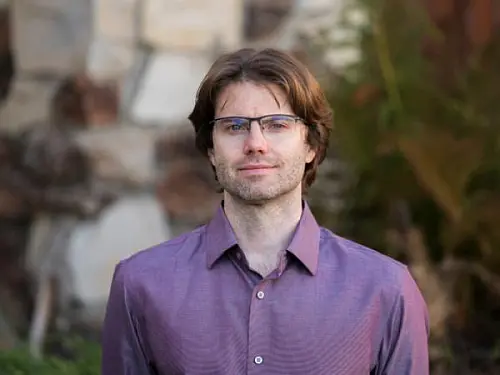
Date: March 26, 2024
Speaker: Conner Galloway
Title: Bigger is Better: NLO-Boosted Excimer Lasers for Inertial Fusion Energy
Abstract
The National Ignition Facility achieved scientific breakeven in December 2022. While this was a major accomplishment, many challenges remain in making Inertial Fusion Energy (IFE) a reality. Xcimer Energy is tackling these challenges by developing a novel laser architecture capable of economically scaling to tens of megajoules of energy and delivering this energy to target from a very small solid angle (<10e-3 sr) with high beam quality and control. This will provide a practical path to rapidly demonstrate and commercialize IFE by allowing the use of simpler fusion targets that can achieve high gain robustly, and leads to repetition rates for electrical power production of under 1 Hz which relaxes requirements throughout the plant. Furthermore, this laser architecture enables the well-studied HYLIFE reactor concept utilizing thick liquid FLiBe molten salt flows to protect the first structural wall, allowing a 30-year lifetime from existing low-activation steel and eliminating the need to develop and qualify new first-wall materials. Xcimer has raised funds from leading clean-tech venture firms, and is currently recruiting for scientific and engineering positions including nonlinear optical physics, low density plasma chemistry and kinetics, plasma physics, pulsed-power, ML optimization and control, and laser & fusion engineering.
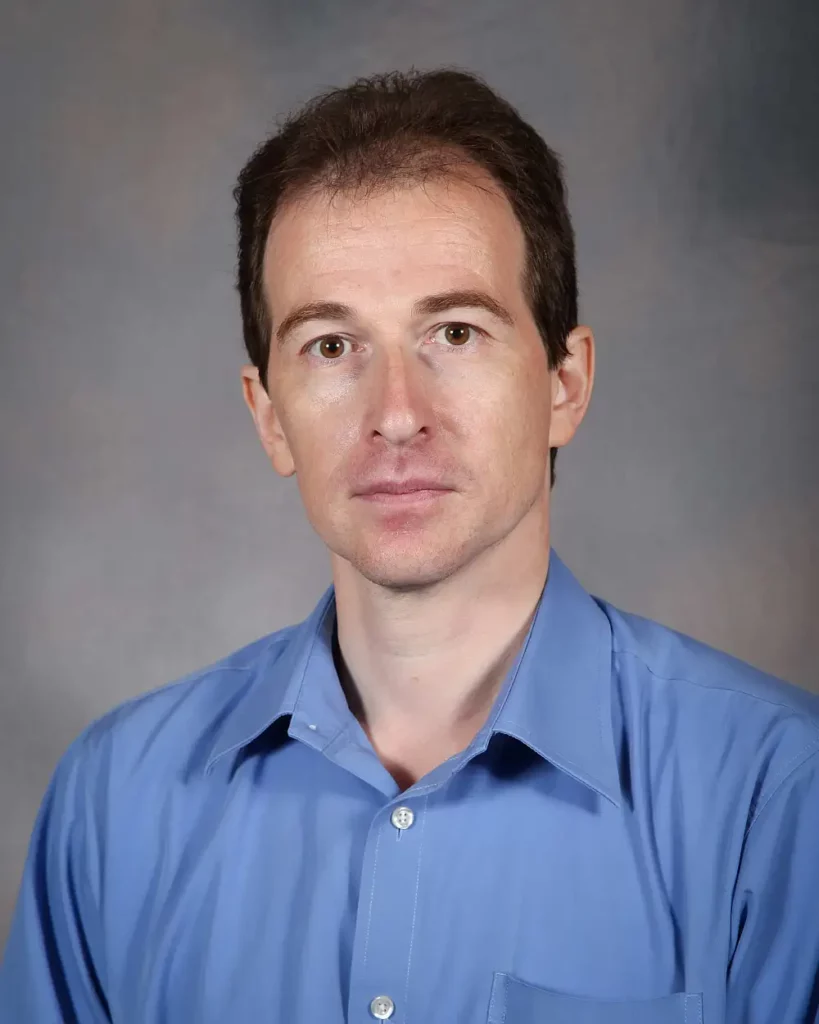
Date: March 19, 2024
Speaker: Pavel V. Tsvetkov
Title: Instrumentation Needs and Novel Sensor Options for Advanced Nuclear Energy Systems
Abstract
Let’s delve into the instrumentation needs and novel detection options for advanced nuclear energy systems, considering both fission and fusion systems. These systems operate under extreme conditions, and monitoring and control are crucial for safety and efficiency. Contemporary nuclear fission reactors and emerging novel technologies of advanced fission reactors call for new sensing approaches that will result in higher fidelity sensing and sensing resilience. Advanced nuclear energy systems demand specialized sensors and instrumentation to operate under extreme conditions, with intense radiation, high temperatures, and potentially corrosive environments. Traditional sensors struggle in these settings. Whether in fission or fusion, continuous research and development are essential for meeting these critical needs. This seminar presentation will discuss operational environments and needs focusing on innovative sensors and detection techniques revolutionizing advanced energy systems monitoring, fuel cycle control, and safety. From high-temperature embedded sensors to fiberoptics to wireless communication technologies, the seminar will explore needs and emerging options in sensor technologies.

Date: February 27, 2024
Speaker: J. Gary Eden
Title: Krypton Fluoride (248 nm) As The Laser Driver for Inertial Fusion Energy (IFE)
Abstract
Laser fusion energy (LFE) offers the potential to generate electrical power by the same process that our Sun produces energy. Recent experiments at the Lawrence Livermore National Laboratory (LLNL) have realized the long-sought goal of scientific breakeven – the generation of more energy from a laser-irradiated, deuterium-tritium (DT) target than that delivered to the target by the laser. This breakthrough in LFE suggests that the commercial-generation of electrical power is feasible but the most-challenging goal – realizing an economically-viable power plant – lies ahead. This presentation will focus on the krypton-fluoride laser (248 nm) as the most attractive optical driver for the industrial production of power by LFE.
Video
Date: February 20, 2024
Speaker: Aleksei Zheltikov
Title: Extreme events in nonlinear optics
Abstract
Optical nonlinearity in stochastic optics can be viewed as a map whereby the statistics of the driver field is transformed into the statistics of the nonlinear output. Our study shows that, despite an enormous variety of output statistics found in nonlinear optics, all these statistics converge, in their extreme-value limit, to one of a few universal extreme-value distributions. Specifically, in the class of polynomial nonlinearities, such as those found in self-focusing, self-phase modulation, weak-field harmonic generation, and multiphoton ionization, the statistics of the nonlinear-optical output converges, in the extreme-value limit, to the exponentially tailed, Gumbel distribution. Exponentially growing nonlinear signals, on the other hand, such as those induced by parametric instabilities and stimulated scattering, are shown to reach their extreme-value limits in the class of the Fréchet statistics, giving rise to extreme-value distributions with heavy, manifestly nonexponential tails, thus favoring extreme-event outcomes and rogue-wave buildup. As one example, analysis of extreme-value statistics of stochastic laser fields suggests a closed-form, quantitative criterion of self-focusing avoidance. Unlike deterministic self-focusing, whose criterion is expressed in terms of a well-defined self-focusing threshold, its stochastic counterpart is a probabilistic process whose combined probability for a sample of N laser pulses builds up as a function of N, leading to N-dependent self-focusing avoidance criteria. Instead of dealing with a question as to how to completely avoid self-focusing, stochastic analysis has to deal with a question of how to effectively manage the self-focusing probability over a finite sample of laser shots.
Video
Rise Hub IFE Plenary Lectures at Major International Meetings
Date: July 5, 2024
Meeting: LPHYS’24
Speaker: Aleksei Zheltikov
Title: Nonlinear Optics of Stochastic Field Waveforms
Video
Date: January 8-12, 2024
Meeting: Plenary lecture at The 54th Winter Colloquium on the Physics of Quantum Electronics, Snowbird, Utah, USA
Speaker: Aleksei M. Zheltikov, Alexei V. Sokolov, Zhenhuan Yi, Girish S. Agarwal, J. Gary Eden, and Marlan O. Scully
Title: Beam instabilities and laser-induced damage in stochastic laser fields: not if, but when
Abstract
Unlike the deterministic theory of self-focusing, modulation instabilities (MIs), and laser-induced damage, the statistical treatment of these processes, presented in this study, is concerned with a question as to how probable MI-driven beam-breakup, laser-filamentation, and laser-damage events are. We examine the power scalability of stochastic nonlinear beam dynamics and analyze effects of the signal-to-noise ratio. The count rate of rare self-focusing and MI-driven events is shown to be highly sensitive to the signal-to-noise ratio of the laser field and the bandwidth of its noise component. We extend our treatment to understand self-focusing, modulation instabilities, and laser-induced damage of optics in excimer-laser beamlines. We show that stochastic beams that formally meet the beam-stability criteria established for deterministic fields may, in fact, be unstable in the sense of rare-event statistics, reducing, as one dramatic consequence, the lifetime of downstream optics. As one of the central insights, in stochastic nonlinear optics, the occurrence of beam instabilities and laser-induced damage is not the question of if, but the question of when.
TAMU IQSE Rise Hub Conferences and Workshops
Date: July 15-26, 2024
Event: RISE Hub IFE at Casper College, Casper College, Casper, Wyoming
Date: May 31, 2024
Event: Princeton-TAMU Symposium on Quantum Engineering and Technology, Princeton
TAMU RISE Hub Speakers:
Alexei Sokolov, “Nonlinear Optics at Its Best: Applications of Quantum Coherence”
Zhenhuan Yi, “Multiphoton processes in Quantum Beat Spectroscopy”
Aleksei Zheltikov, “Instabilities of nonlinear waves in optics: insights from the inverse scattering transform”
Date: April 22 – 23, 2024
Event: Texas A&M University – International Atomic Energy Agency Workshop, IQSE, Texas A&M University
Date: April 8, 2024
Event: Baylor – TAMU Solar Eclipse Physics Workshop, The Baylor Research and Innovation Collaborative Center
More Info: Baylor – TAMU solar eclipse physics workshop / Physics & Astronomy / Texas A&M University Events Calendar
Date: January 8-12, 2024
Event: The 54th Winter Colloquium on the Physics of Quantum Electronics, Snowbird, Utah, USA
Breakout Session: Lasers and laser-matter interactions for Fusion Energy
Talks

Speaker: Pravesh Patel, Focused Energy
Title: Inertial Fusion Energy with High Gain Proton Fast Ignition
Abstract
The successful demonstration of ignition and scientific breakeven at the National Ignition
Facility (NIF) has renewed interest in inertial fusion energy (IFE). Of the many scientific and
technical challenges on the path to IFE, first and foremost is the requirement for a fusion scheme
capable of achieving both high target gain and robust performance. IFE targets will require gains
of G>100, and must reliably ignite in a harsh enviornment at high repetition-rate, while being
robust to laser delivery and target imperfections. While the indirect-drive central hot spot (CHS)
scheme has shown ignition, the laser-to-capsule coupling efficiency of the scheme is low, and the
use of a high velocity, highly convergent implosion places demanding requirements on the laser
irradiation uniformity and target quality, making it very challenging to achieve the high fusion
gains and robust performance needed for IFE.
An approach that may be well suited to the high gain and robust performance requirements
of IFE is direct-drive proton fast ignition (PFI) [1]. Fast ignition [2] achieves high efficiency and
high gain by separating the stages of fuel compression and heating. First, the D-T fuel is
compressed to high density (>300 g/cm3) using a partially spherical implosion. Second, a small
volume of the compressed fuel is heated by a laser-generated proton beam to ∼10 keV, initiating
ignition and burn. Since PFI does not require a central hot spot, it can utilize a lower velocity
implosion with more fuel mass (and hence, higher fusion yield and gain), and it can significantly
relax the requirements on implosion symmetry. The primary requirements for the proton ignitor
pulse—laser-to-proton conversion efficiency, energy spectrum, and focusability—have been
shown to be achievable, independently, on current short-pulse lasers with energies of 10’s-100’s J.
Key scientific questions remain as to whether these requirements can be met simultaneously, and
scaled to the laser energies of >100 kJ needed for ignition. If they can, then the PFI approach would
be very attractive for IFE.
This talk will describe the roadmap developed at Focused Energy to address the major
scientific and technical challenges to demonstrating the feasibility of the PFI approach for IFE.
References
[1] M. Roth et al., PRL 86, 436 (2001)
[2] M. Tabak et al., Phys. Plasmas 1, 1626 (1994)

Speaker: Siegfried Glenzer, SLAC/Stanford
Title: Exploring matter found inside planets, stars, and laser fusion implosions
Abstract
With the advent of high peak brightness X-ray sources at X-ray Free Electron Laser (XFEL)
facilities and at the National Ignition Facility (NIF), we are now in the position to study the most
extreme conditions of matter found in our galactic environment. Specifically, our experiments
probe dense compressed matter with densities and temperatures of those in the mantle of the giant
planets of the solar system, in stellar interiors, and in inertial confinement fusion implosions [1-7].
These studies reach the pressure and temperature conditions at which precipitation of diamond
occurs from hydro-carbon mixtures, which is important for modeling of icy planets, e.g., Neptune.
Our studies comparing data from the Linac Coherent Light Source (LCLS) and the European
XFEL have successfully resolved substantial disagreements from dynamic and static laboratory
experiments where we find that dynamic compression techniques need much more extreme
conditions to form diamonds than are required at static compression. These data show, for the first
time, that reaction kinetics is the main reason for the previously observed discrepancies and
indicate that diamonds are much more ubiquitous inside planets than previously thought [4].
Currently, we are performing experiments in the high-energy density physics phase space at
unprecedented high pressures on the NIF. We use X-rays for radiography [5] and Thomson
scattering [6] for temperature measurements testing equation of state models of conditions
occurring inside stars and in laser fusion experiments. In this presentation, I will discuss how these
experimental studies provide critical information to advance the field and show a path towards
prioritizing technology developments needed for the success of future Inertial Fusion Energys [7].
References
[1] D. Kraus et al., Nature Astronomy (2017).
[2] S. Frydrych et al., Nature Comm. (2020).
[3] Z. He et al., Science Advances (2022).
[4] M. Frost et al., Nature Astronomy (2023).
[5] A. Kritcher et al., Nature (2020).
[6] T. Doeppner et al., Nature (2023).
[7] A. B. Zylstra et al., Nature (2022).
Speaker: Mike Campbell, MCM Consultants
Title: Perspectives on Inertial fusion energy – Opportunities and Challenges
Abstract
The recent achievement of scientific fusion gain with deuterium tritium (DT) fuel at the National Ignition
Facility represents a milestone in the development of Inertial Fusion and fusion energy in general. In this
experiment, fuel pressures well in excess of 100’s of GBars were achieved in the compressed fuel. At these
conditions heating of the fuel by the alpha particles more than doubled the plasma temperature and
significantly increased the DT fusion rate. The fuel gain, defined as the fusion energy produced divided by
the internal energy of the DT fuel due to the hydrodynamic work in the implosion was approximately 160!
This achievement was made possible by over 4 decades of research at laser facilities around the world.
Advances in laser technology both in frequency and precision, motivated by understanding laser-plasma
interaction physics and the demands of targets, improvements in target fabrication inspired by the need
to control and minimize hydrodynamic instabilities in the implosion and multi-dimensional simulations
and diagnostics have been critical to this achievement. The scientific and technical advances, the surprises,
and challenges and that had to be overcome to achieve this goal-the first time in more than 70 years of
fusion research- and a perspective on the future for fusion energy will be presented.
Speaker: Arianna Gleason, SLAC National Accelerator Laboratory
Title: High-fidelity characterization of nanofoams for inertial fusion energy targets
Abstract
The utility of nanostructured foams in the fusion community is varied and critically important.
Applications range from advancing laboratory studies of astrophysical Marshak wave evolution
[1], key processes in indirect-drive inertial confinement fusion (ICF) via Cu-foam studies [2], to
more novel, cost-effective fuel containment material for inertial fusion energy (IFE) concepts via
deuterium/tritium (D/T) wetted low-Z polymer foams [3]. However, the influence of critical
aspects of the starting foam morphology, including microstructure, fabrication variation, and
chemical inhomogeneities, is not well-understood. Here, we report on novel XFEL-based tomoptychography
to generate 3-dimensional (3D) images of static metal nano-foams, copper-based,
over 10s 𝜇m3 volumes. We systematically characterize the pore-structure morphology to ~30 nm
resolution, e.g., pore size distribution, pore wall density, spatial distribution of impurity/chemical
concentration at pore intersection, and pore shape distribution [4,5].
These same tools can be applied to IFE-foam target types – comparing characteristics and
microstructural properties of both chemical- and advanced manufacturing-methods. Developments
toward using cryo-TEM facilities at SLAC for imaging while wetted will also be discussed. Static,
characterization measurements via XFEL-based tomo-ptychography are necessary to prepare for
future laser-driven shock-compressed nanofoams using single-shot XFEL ptychography.
Preliminary data and future dynamic compression work at MEC, LCLS will provide equation-ofstate
measurements and microstructural evolution of nanofoams from 2D areal densities analyzed
by phase contrast [6] X-ray imaging- and Talbot interferometry imaging-methods [7] during multi-
Mbar shock compression.
References
[1] R. Marshak, Phys. Fluids 1, 24 (1958).
[2] M. Pound et al., Astrophys. Space Sci. 307, 187 (2007).
[3] T. Collins et al., Phys. Plasmas 12, 062705 (2005).
[4] C. Sweeney et al., ‘Interface Data Processing Workflow for Real-Time Imaging’, Conference on
Data Analysis, Santa Fe NM, LA-UR-23-21771 (2023).
[5] A. Gleason et al., ‘Toward high-fidelity characterization of foams for fusion targets’, IFSA
Conference Abstract 109.0.0.268.2023, Inverness CO, LA-UR-23-29008 (2023).
[6] D. Hodge et al., Optics Exp. 30, 38405 (2022).
[7] G. Perez-Callejo et al., Phys. Plasmas 29, 043901 (2022).
Speaker: J. Gary Eden, University of Illinois
Title: Stimulated Brillouin Scattering at 266 nm in the Rare Gases and N2
Abstract
Because temporal pulse compression and amplification by stimulated Brillouin scattering
(SBS) undergirds several laser fusion optical driver concepts, SBS spectral profiles and
pump-probe coupling coefficients have been measured for several gases at 266 nm. By
thermally chirping the wavelength of the injection-seeding semiconductor laser in the
pump, extensive measurements have been made over the entire spectral profile with a
resolution of 50 MHz. Experimental results will be presented for several rare gases and
N2, and the data will be compared to the predictions of kinetic and hydrodynamic theory.
Speaker: Erhard Gaul, University of Texas at Austin
Title: N/A
Abstract
N/A
Speaker: Gennady Shvets, Cornell University
Title: Laser-ion acceleration and its applications to inertial fusion: from fast ignition to heavy-ion drivers
Abstract
N/A
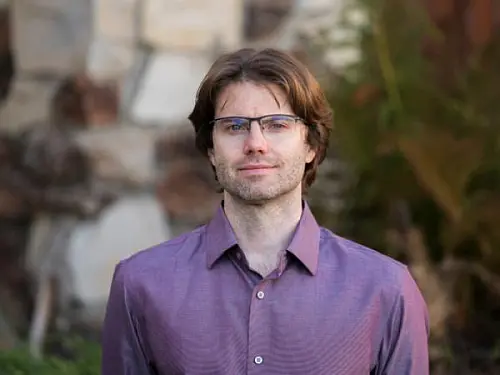
Speaker: Conner Galloway, Xcimer Energy Corporation
Title: N/A
Abstract
N/A
Speaker: Sophia Malko, Princeton Plasma Physics Lab
Title: Proton transport and stopping power in warm dense matter
Abstract
Ion stopping power in high energy density (HED) plasmas is of great interest for fundamental
science and is important in many areas of inertial confinement fusion (ICF), including central
hot spot ignition, fast ignition, and heavy ion fusion. Theoretical modelling of ion stopping
power in HED plasmas is a difficult task and there is little experimental data to validate and
benchmark models, contributing to large discrepancies amongst them. The modelling of
stopping power in Warm Dense Matter (WDM) is particularly challenging due to electron
degeneracy and coupling, which modify the Coulomb logarithm characterizing the collisions in
the plasma. While a number of experimental studies have been performed on ion stopping
power in classical plasmas, experimental database in WDM is essentially missing. In
addition, the low velocity stopping power regime where vp (ion velocity) ~ vth (electron
thermal velocity) remains virtually unexplored.
Here, we report the first proton energy loss measurements in warm dense plasma at low
projectile velocities vp/ vth≈ 3-10 [1]. The experiments were performed at CLPU VEGA-II and
CSU ALEPH laser facilities by using a novel high repetition rate platform [2]. The platform is
based on the selection of a quasi-monoenergetic, short time-duration, proton beam of 500 keV
from an initially broad proton spectrum. A WDM with a temperature of 10 eV was generated
by femtosecond laser-heating of a thin carbon foil and characterized using two independent
spectroscopy diagnostics. Our energy-loss data demonstrate a significant deviation of the
stopping power from classical models in this regime. In particular, we show that our results are
in closest agreement with recent first-principles simulations based on time-dependent density
functional theory [3,4].
[1] S. Malko et al, Nat. Commun.13, 2893 (2022)
[2] J. Apiñaniz et al. Sci. Rep. 11, 6881 (2021)
[3] A. J. White et al., Phys. Rev. B 98, 144302 (2018)
[4] A. J. White et al., Phys. Rev. Lett. 125, 055002 (2020)
RISE Hub IFE Workforce Development
Date: July 15-26, 2024
Event: TAMU-Princeton-Casper-Baylor-CSU-UIUC Summer School, Casper College, Casper, Wyoming
Topics: From Laser Fusion to Quantum Physics and Gravity
Date: April 13, 2024
Event: Physics & Engineering Festival, Texas A&M University, George P. Mitchell Physics Building
More Info: Physics & Engineering Festival / Physics & Astronomy / Texas A&M University Events Calendar (tamu.edu)
Date: April 8, 2024
Event: Baylor – TAMU Solar Eclipse Physics Workshop, The Baylor Research and Innovation Collaborative Center
Speakers:
Alexei Sokolov (Texas A&M University): Laser fusion
Arash Azizi (Texas A&M University): Solar eclipse and general relativity
Aleksei Zheltikov (Texas A&M University): Nothing like the Sun
More Info: Baylor – TAMU solar eclipse physics workshop / Physics & Astronomy / Texas A&M University Events Calendar






